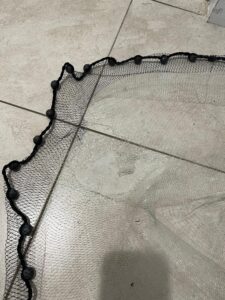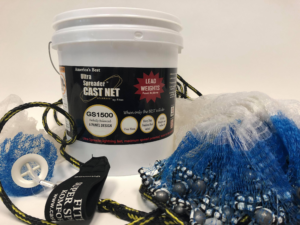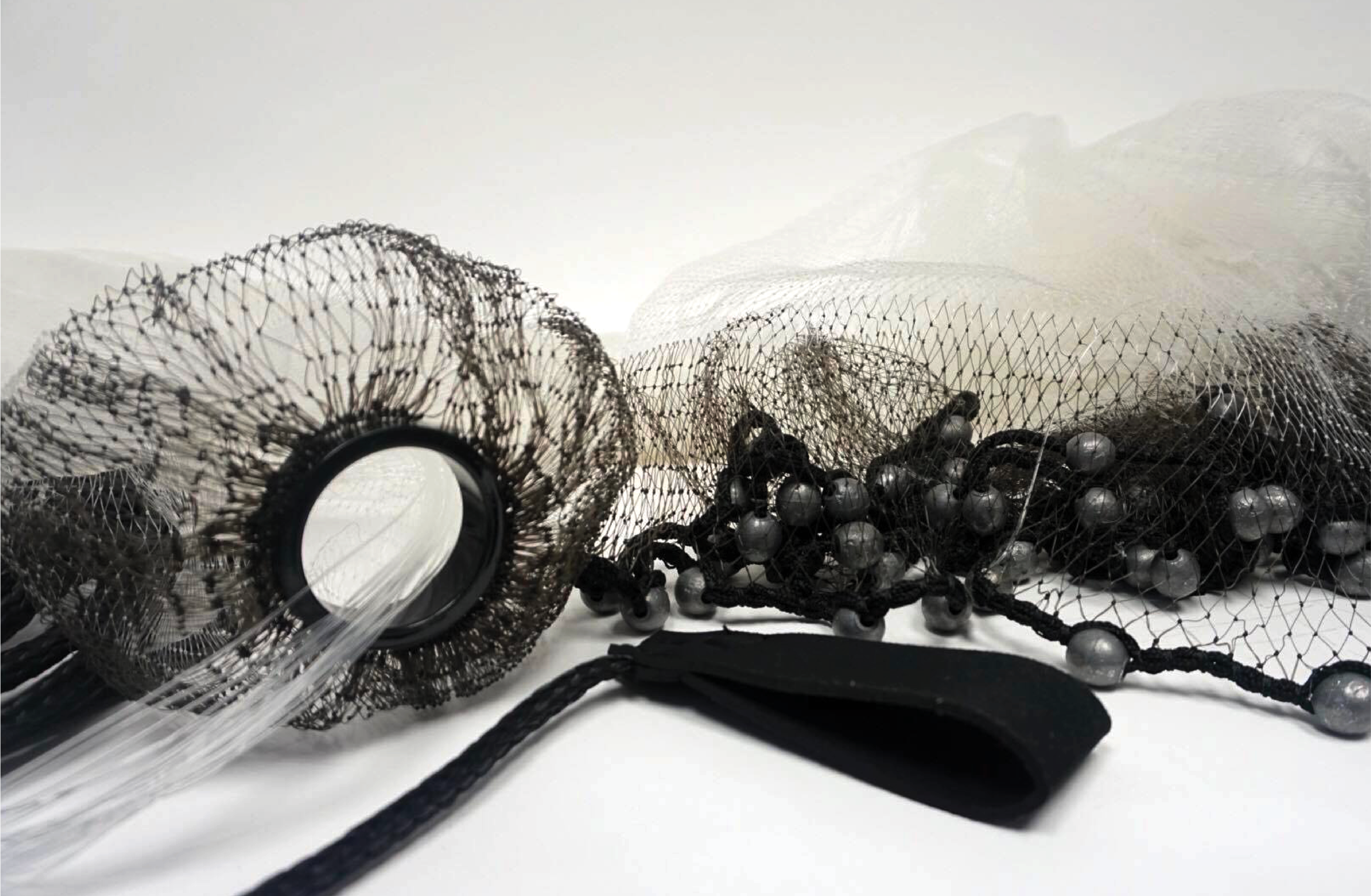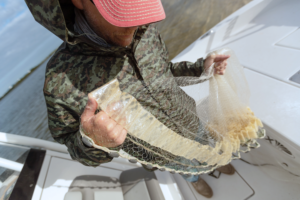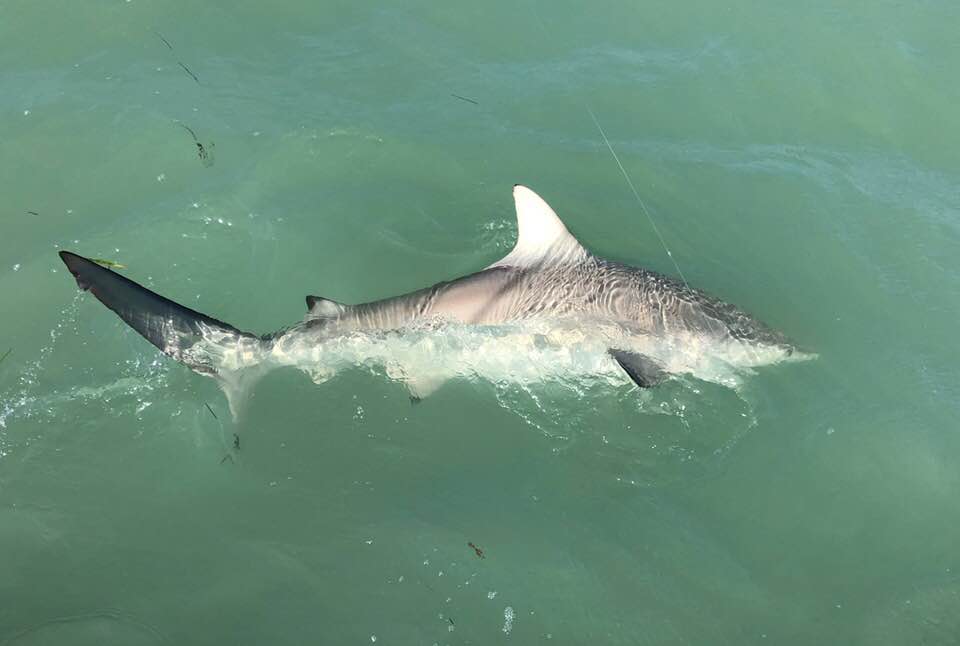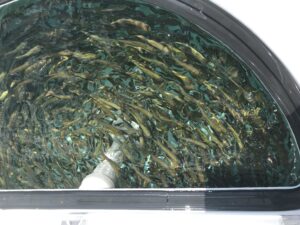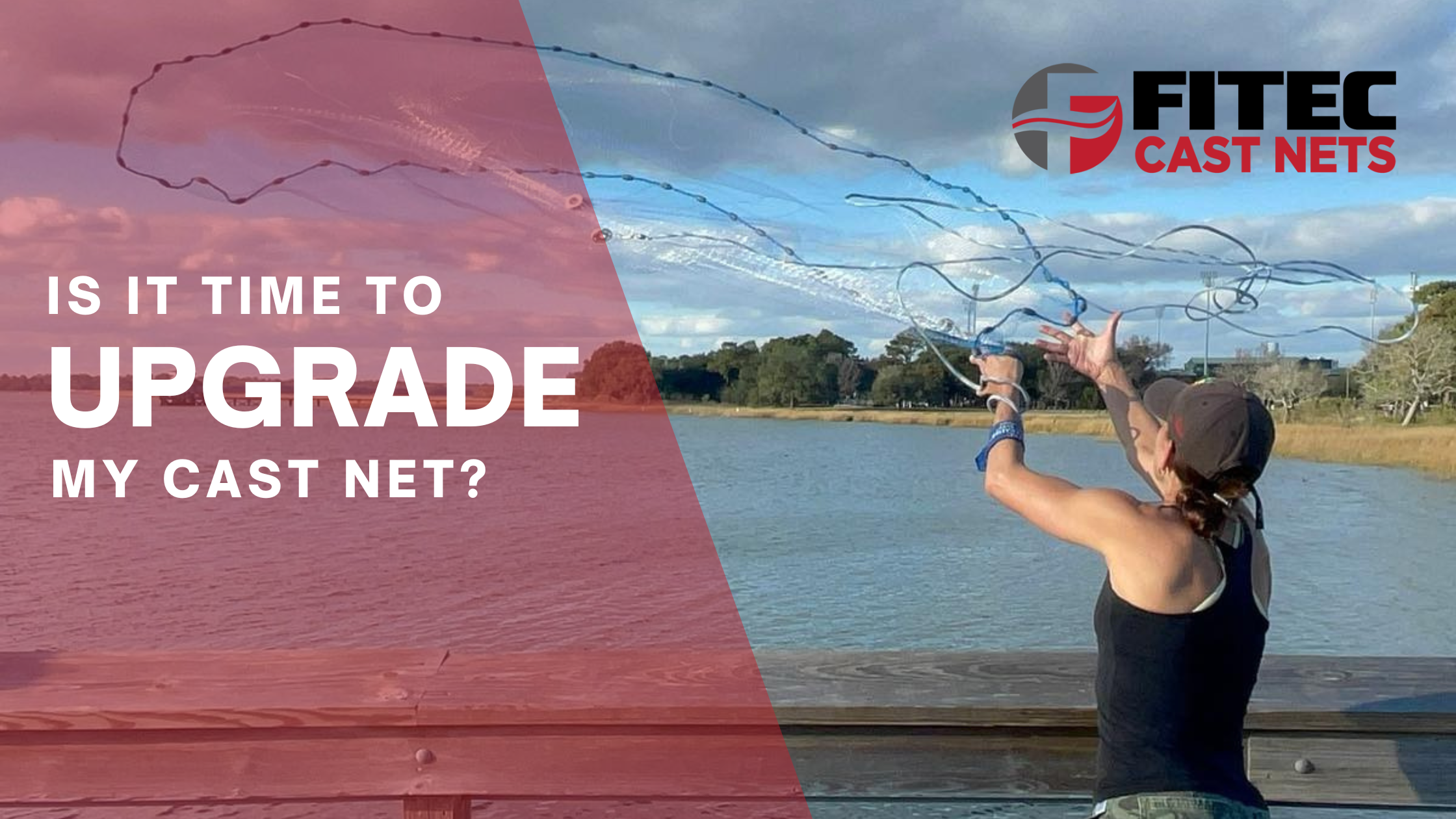
When should I upgrade my cast net?
- Post author:fitecwordpress
- Post published:January 26, 2023
- Post category:BLOG
Cast nets come in all types, including differing mesh and radius sizes and with different features. But when is it time to change your cast net? Consider these guidelines from cast net enthusiasts Remy Sheikh and Brian Welch.
1. How old is your net?
Like most things, cast nets probably won’t last forever. But more than the age of the net in years, consider how many times you’ve thrown the cast net or how it’s been cared for.
A telltale sign of an aging cast net that may need to be replaced is brittle netting. A net in good condition should be relatively soft to the touch, not dry or rough. If your cast net feels a little tougher than it used to, it may tear easily. Consider replacing it.
2. Are the features intact?
Every feature of a cast net matters to its performance. Check these key features to determine whether you may need to replace your cast net.
• Netting – Is there a hole in the net too large to repair? Any hole can cause bait to escape!
• Prior repairs – If you’ve previously repaired the net, check that the repair is still intact. Sometimes, an improper repair can deform a cast net. In that case, the net becomes hard to handle and won’t spread properly – meaning bait can escape.
• Twine – Check the twine that secures the lead line to your cast net. It can loosen over time and create gaps near the leads. If you notice these gaps, consider getting a new cast net.
• Horn – If the horn on a cast net comes off or – even worse – breaks apart, it cannot be replaced or repaired. You’ll need a new cast net.
3. How’s your skill level?
As with any skill, the more you practice, the better you’ll be. Once you’ve achieved a perfect pancake or reached a good comfort level with your existing cast net, you may want to consider upgrading. Some upgrades may include:
• A larger net (if it’s allowed in the area where you catch your live bait) – Larger nets tend to be heavier and require a higher skill level to throw. But they can also catch more bait in fewer throws! If you’re not sure what your state’s laws are with regard to cast nets, check with your local fisheries department.
• A more sophisticated design – Consider Fitec’s full line of nets. The EZ Throw features a patented ACCU-THROW ring that addresses some of the learning curve when learning to throw a cast net. That ring isn’t included on nets more experienced anglers tend to like, such as the GS 1500 Ultraspreader, which boasts features like larger radius options, a variety of mesh sizes and heavier weights.
• Durability – Once you’re using a cast net frequently, it’s worth investing in higher-quality materials. Fitec’s Signature Series is a good example of this. The net features extremely strong, premium Japanese netting with high-tensile strength and a double lead line triple-tied at each mesh to protect the netting. Their confidence in the material quality is one reason the company can offer an industry-exclusive no questions asked replacement policy on Signature nets.
4. What type of bait would you like to catch?
It’s common for those who fish often to seek a variety of bait. And those anglers need a variety of cast nets. For large bait like mullet or bunker, you’ll want to consider something like the GS 1000 Ultraspreader Mullet Net. For shrimp or other deep water targets, you may also want a tape net.
Consider your mesh size. The correct mesh will not damage the bait.
Need help choosing your net? Check out this explainer.

